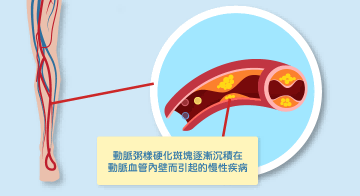
弥漫性子宫腺肌症怎么治疗 5cm的卵巢囊肿消失了
作者:中华健康网 时间:2023-05-26 22:10 阅读:4583
Topic: Treatment of diffuse adenomyosis and disappearance of a 5cm ovarian cyst
Introduction:Diffuse adenomyosis and ovarian cysts are common gynecological conditions that affect women of reproductive age. These conditions can cause pain, discomfort, and complications in pregnancy. This article will discuss the treatment options for diffuse adenomyosis and the disappearance of a 5cm ovarian cyst.
I. Diffuse adenomyosisA. Definition and causes B. Symptoms and diagnosis C. Medical treatment 1. Hormonal therapy 2. Non-steroidal anti-inflammatory drugs D. Surgical treatment 1. Endometrial ablation 2. Hysterectomy
II. Ovarian cystsA. Definition and causes B. Symptoms and diagnosis C. Medical treatment 1. Hormonal therapy 2. Pain management D. Surgical treatment 1. Ovarian cystectomy 2. Oophorectomy
III. Case studyA. Patient presentation B. Diagnosis C. Treatment plan 1. Combination therapy 2. Follow-up appointments
IV. Conclusion A. Importance of proper diagnosis B. Multidisciplinary approach to treatment C. Positive outcome
I. Diffuse adenomyosisA. Definition and causes Diffuse adenomyosis is a condition where the cells from the lining of the uterus grow into the muscle of the uterus. This condition can cause heavy menstrual bleeding, severe pelvic pain, and infertility. The cause of diffuse adenomyosis is unknown, but it is believed to start during puberty.
B. Symptoms and diagnosis The symptoms of diffuse adenomyosis include painful menstrual cramps, heavy bleeding during periods, pain during sex, and infertility. The diagnosis can be made through a pelvic examination, ultrasound, MRI, or biopsy.
C. Medical treatmentThere are several medical treatment options for diffuse adenomyosis. Hormonal therapy can be effective in reducing menstrual bleeding and pain. Non-steroidal anti-inflammatory drugs (NSAIDs) can also be used to relieve pain during periods.
D. Surgical treatmentIf hormonal therapy and NSAIDs are not effective, surgical treatment may be necessary. Endometrial ablation is a minimally invasive procedure that can remove the lining of the uterus to reduce heavy menstrual bleeding. In severe cases, a hysterectomy may be necessary to remove the uterus completely.
II. Ovarian cystsA. Definition and causes An ovarian cyst is a fluid-filled sac that grows on the ovary. Ovarian cysts are common in women of reproductive age and are usually benign. The cause of ovarian cysts is unknown, but they can be caused by hormonal imbalances or infertility treatments.
B. Symptoms and diagnosis The symptoms of ovarian cysts include abdominal pain, bloating, and irregular menstrual cycles. Diagnosis can be made through a pelvic examination, ultrasound, or MRI.
C. Medical treatmentHormonal therapy can be used to shrink ovarian cysts and prevent the formation of new cysts. Pain management can also be used to relieve the symptoms associated with ovarian cysts.
D. Surgical treatmentIf the cyst is large or causing severe symptoms, surgical treatment may be necessary. An ovarian cystectomy is a surgical procedure that removes the cyst while preserving the ovary. In severe cases, an oophorectomy may be necessary to remove the entire ovary.
III. Case studyA. Patient presentation A 32-year-old female presented with severe pelvic pain, heavy menstrual bleeding, and irregular menstrual cycles.
B. Diagnosis The patient was diagnosed with diffuse adenomyosis and a 5cm ovarian cyst.
C. Treatment plan The patient was started on a combination therapy of hormonal therapy and NSAIDs to manage the symptoms. Follow-up appointments were scheduled to monitor the effectiveness of the treatment.
D. Positive outcome After three months of treatment, the patient’s symptoms had significantly improved, and the 5cm ovarian cyst had disappeared.
IV. ConclusionA. Importance of proper diagnosis Proper diagnosis of gynecological conditions is essential for developing an effective treatment plan and improving patient outcomes.
B. Multidisciplinary approach to treatment Treatment of gynecological conditions often involves a multidisciplinary approach, including gynecologists, endocrinologists, and pain management specialists.
C. Positive outcome Effective treatment of diffuse adenomyosis and ovarian cysts can improve the quality of life for women and reduce complications in pregnancy.




